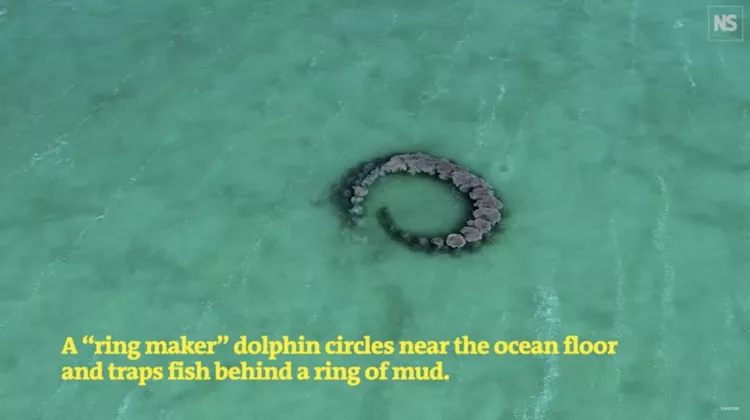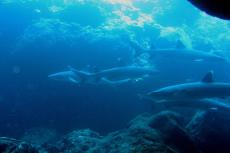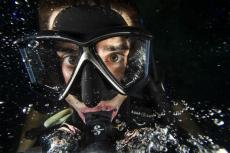Dolphins in Caribbean trap fish with mud nets
Some bottlenose dolphins in the Caribbean have been using mud rings when hunting prey, a strategy previously believed to be unique to the bottlenose dolphins in Florida.
In 2019, a pair of bottlenose dolphins in the Caribbean—a mother and her calf—was filmed in the Chetumal-Corozal Bay in northern Belize using mud rings to catch fish.
This method of catching fish was first observed and documented in several parts of Florida by Stefanie Gazda, a researcher from University of Florida in 2005.
In this hunting strategy, one of the dolphins swims down to the seabed and uses their tail to stir up plumes of mud in a ring-shaped configuration. The loosened mud raises and forms a barrier that traps and corrals fish within.
When the fish attempt to escape by jumping out of the water, the other dolphins would be waiting, ready to lunge out of the water at the fish with open mouths.
Normally, this strategy is utilized by dolphins working in groups, though a video by Michael McCarthy showed a lone dolphin employing this strategy in Seminole, Florida. McCarthy has witnessed other solo dolphins using this strategy in the St. Petersburg area as well.
Same tactics used by two different groups
To find out whether the same hunting tactics were used by the bottlenose dolphins in Florida and in the Caribbean, Eric Ramos, a PhD candidate in Animal Behavior and Comparative Psychology in the Department of Psychology at The Graduate Center, City University in New York City, traveled to Florida to collect satellite imagery of the mud rings there for comparison.
While amazed at how two separate groups of dolphins came up with the same hunting strategy, he was not totally surprised, due to the similarity of the two locations.
“…It seems a strong case that they likely converged on this solution and learned to create mud rings to hunt fish in a similar circumstance, which is incredible to me that they would devise similar complicated tactics,” he said, in an article in The Independent.
"“You’d kind of expect the dolphins would do it but we hadn’t had evidence before showing that they could innovate a complex foraging tactic that’s so similar in different populations that are not close," he added.
The findings of the research by Ramos and his team is published in the Marine Mammals Science journal.



























